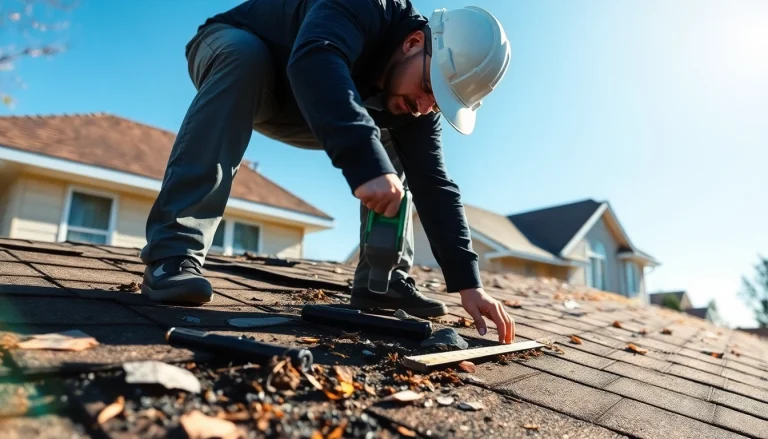
Understanding the Basics of Electrical Panels
Electrical panels, often referred to as breaker boxes, act as the control center for your home’s electrical system. They distribute electricity from the utility company to various circuits throughout your living space, ensuring that every outlet, fixture, and appliance receives the power it needs. Understanding the fundamental aspects of electrical panels is essential for homeowners, especially when considering upgrades or addressing electrical issues.
What is an Electrical Panel?
An electrical panel is a metal box mounted on a wall that houses a set of circuit breakers or fuses. This panel is connected to your home’s electrical service and is responsible for distributing electricity to different areas of your home. It regulates the flow of electrical current and protects your home from electrical overloads or short circuits.
Key Components of an Electrical Panel
Understanding the components of your electrical panel helps you appreciate its functionality:
- Main Breaker: This is a large switch that controls the electricity supply to the entire house.
- Circuit Breakers: Smaller switches that control power to individual circuits. If there’s a surge or overload, these will trip, stopping the flow of electricity to prevent damage.
- Bus Bars: These are conducting bars that connect circuit breakers to the main power supply.
- Grounding System: This component helps to direct excess electricity safely into the ground.
- Neutral Bus: This is where all the neutral wires connect, ensuring that current returns safely to the circuit panel.
Electrical Panel Terminology Explained
When discussing electrical panels, several terms are frequently used, and it’s helpful to know what they mean:
- Amperage: A measure of electrical current, usually expressed in amps. This indicates how much electricity your panel can handle.
- Voltage: The electrical potential difference that drives the current; most homes in the U.S. use 120/240 volts.
- Load: The total amount of electrical power being consumed at any given time.
- Surge Protector: A device that protects your panel from voltage spikes.
- Subpanel: A secondary panel that distributes electricity to a specific area or circuit in your home.
Signs You Need to Upgrade Your Electrical Panel
Recognizing when to upgrade your electrical panel is crucial for maintaining a safe and efficient home electrical system. Here are key signs indicating it may be time for an upgrade:
Increased Power Demands from Appliances
Modern homes utilize a plethora of high-energy appliances, from refrigerators to home theaters, which require more power than older systems were designed to handle. If you frequently run devices simultaneously and experience flickering lights or tripped breakers, it may be a sign your panel is inadequate. Upgrading to a higher amperage panel can mitigate these issues and safely support your electrical needs.
Frequent Circuit Breaker Trips and Malfunctions
Frequent trips of the circuit breakers often signal overloads or that your panel is struggling to manage the demand. If you’re resetting breakers often, this repetitiveness not only disrupts your daily life but can also indicate a risk for electrical fires over time. It’s advisable to consult an electrician who can provide options to expand or upgrade your panel safely.
Indicators of Age and Outdated Features
Electrical panels, like any other component in your home, have a lifespan. If your electrical panel is over 20 years old, it may not meet current safety standards or technological advancements. Obsolete features, like outdated circuit breakers or the absence of necessary safety devices, suggest it’s time to consider a professional evaluation for an upgrade.
Types of Electrical Panels Available
Understanding the different types of panels available can help you make informed choices regarding an upgrade:
General Types: Breaker vs. Fuse Panels
The two primary types of electrical panels are:
- Breaker Panels: These utilize circuit breakers to control and distribute electricity. Breakers can be easily reset and replaced.
- Fuse Panels: Older systems often relied on fuses to protect circuits. Once a fuse blows, it needs to be replaced, making breaker panels the preferred choice today.
Comparison of Panel Features
When choosing an electrical panel, consider these features:
- Amperage Rating: Standard household panels range from 100 to 400 amps. Higher ratings are essential for larger homes with high electricity demands.
- Number of Circuits: Ensure the panel has enough slots for future expansion as more devices or appliances are added in your home.
- Surge Protection: Choose panels that include built-in surge protectors for enhanced safety.
Choosing the Right Amperage for Your Home
Choosing the right amperage is essential for your home’s electrical needs:
- 100 Amps: Suitable for smaller homes or apartments.
- 150 Amps: Ideal for average-sized homes with standard appliances.
- 200 Amps: Recommended for larger homes and those with numerous high-draw devices.
- 400 Amps: Often reserved for custom or large homes with extensive electric systems.
The Upgrade Process: Steps to Take
Upgrading your electrical panel involves several critical steps to ensure the process is safe, compliant, and effective:
Assessing Your Current Electrical System
Begin by having a qualified electrician examine your current setup. This assessment includes evaluating the existing panel’s capacity, the electrical load, and any potential code violations.
Hiring a Qualified Electrician
Upgrading an electrical panel is a job for professionals. When selecting an electrician, ensure they are licensed and insured. Ask for upfront quotes and check references. A knowledgeable electrician can guide you through panel options and the implications of upgrading.
Permitting and Compliance Considerations
Most areas require that electrical panel upgrades adhere to local codes and regulations, meaning you’ll often need permits. Your electrician should handle this on your behalf, obtaining the correct permits and ensuring the installation complies with all safety standards.
Cost Considerations for Upgrading Your Electrical Panel
The cost of upgrading an electrical panel can vary widely based on several factors:
Estimated Costs of Electrical Panels
Generally, the price of a new electrical panel can range from $500 to $1,500, excluding installation fees. Factors influencing this cost include the panel’s amperage, brand, and any added features such as surge protection.
Understanding Installation Fees
Installation fees typically range from $300 to $1,000 depending on the complexity of the job and local labor rates. If extensive rewiring or additional circuit installation is needed, costs may increase accordingly.
Long-term Savings from Modern Panels
While the upfront cost of upgrading an electrical panel might appear significant, consider the long-term savings. Newer panels are often more energy-efficient and can reduce electricity bills. Additionally, they can decrease the risk of electrical fires and the associated costs of damages and injuries, making upgrades not just a necessary safety measure but also a financially sound investment.






